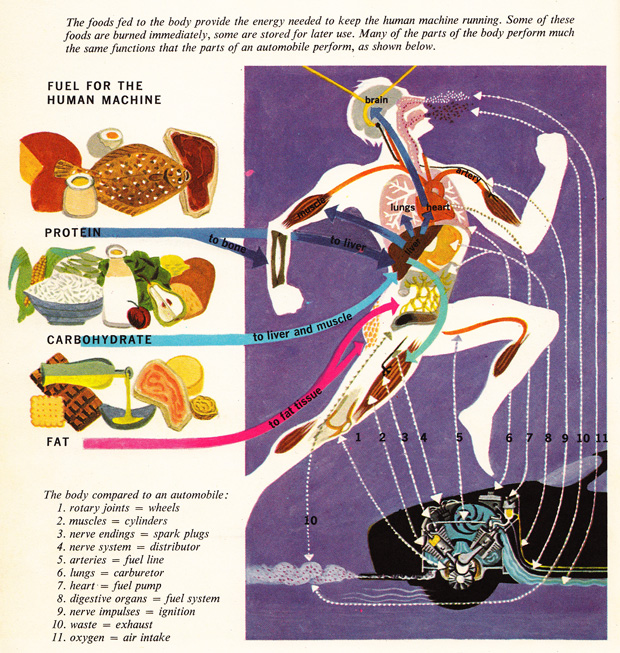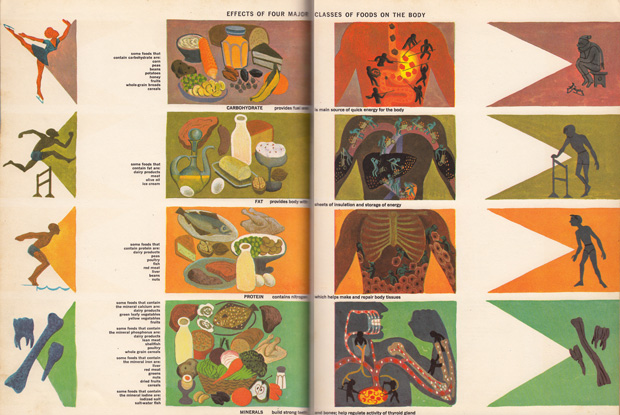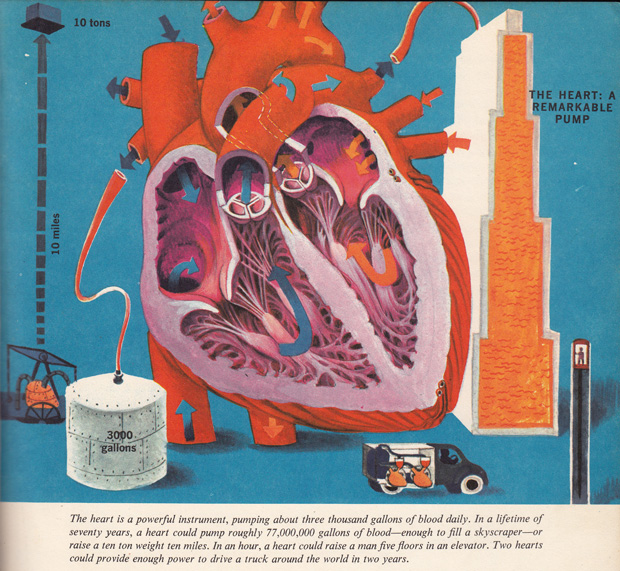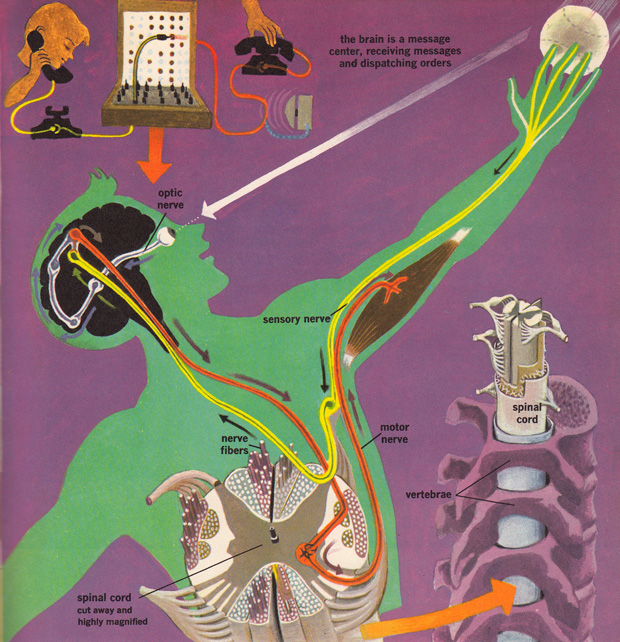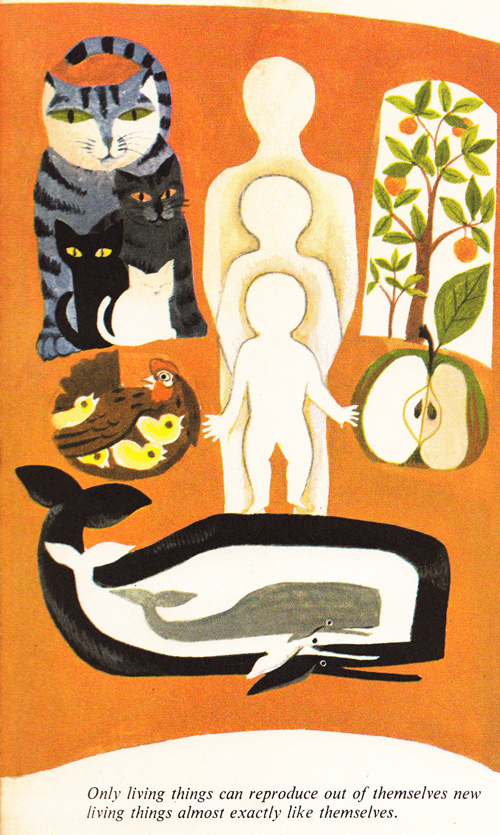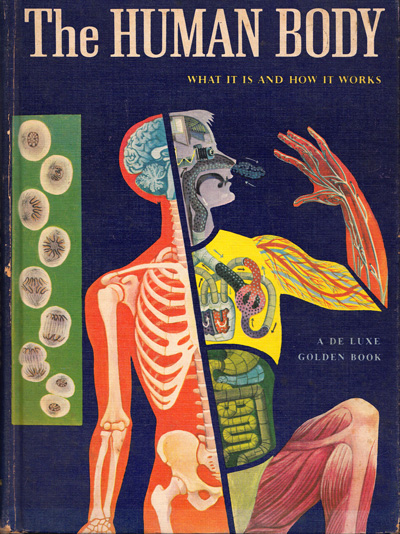 Much of our inquiry into what makes us human focuses on understanding consciousness, yet we spend the whole of our lives in our physical bodies. As a lover of anatomical art and vintage science illustration, I was instantly enamored with The Human Body: What It Is And How It Works
— a stunning vintage anatomy book, depicting and explaining in more
than 200 vibrant mid-century illustrations the inner works of the body.
Originally published in 1959, this colorful gem was inspired by German
artist and researcher Fritz Kahn, who in his 1926 classic Man as Industrial Palace
described the human body as “the highest performance machine in the
world” and used industrial metaphors to illustrate its remarkable
capacities.
Much of our inquiry into what makes us human focuses on understanding consciousness, yet we spend the whole of our lives in our physical bodies. As a lover of anatomical art and vintage science illustration, I was instantly enamored with The Human Body: What It Is And How It Works
— a stunning vintage anatomy book, depicting and explaining in more
than 200 vibrant mid-century illustrations the inner works of the body.
Originally published in 1959, this colorful gem was inspired by German
artist and researcher Fritz Kahn, who in his 1926 classic Man as Industrial Palace
described the human body as “the highest performance machine in the
world” and used industrial metaphors to illustrate its remarkable
capacities.From the nine systems of the body — skeletal, muscle, nervous, digestive, respiratory, circulatory, lymphatic, endocrine, and reproductive — to the intricacies of the different organs and senses, the tantalizing tome demonstrates, in delightfully illustrated detail, just how magnificent our physical complexity is.
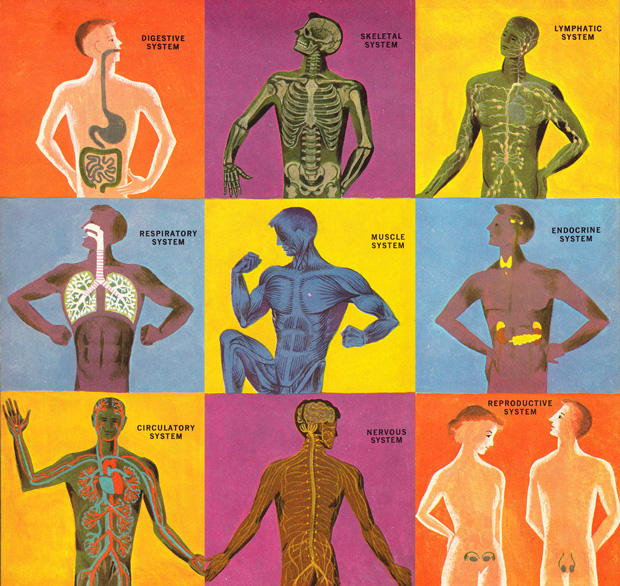
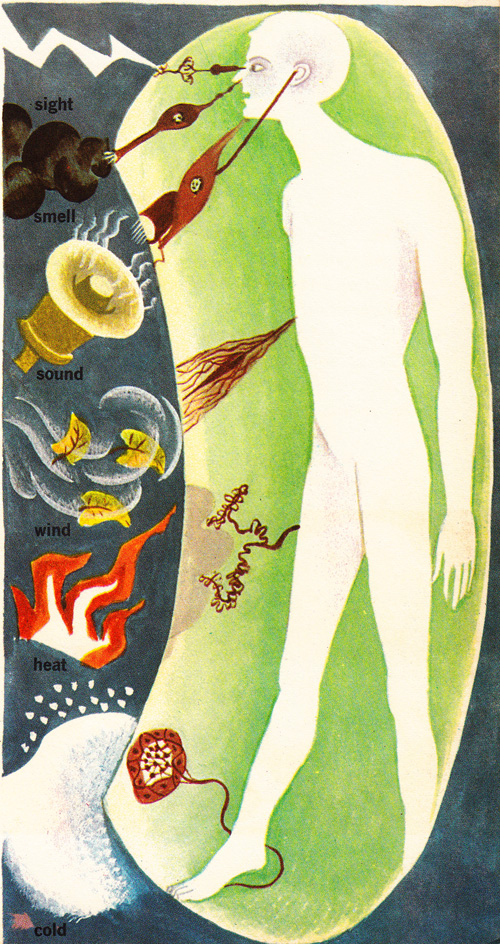

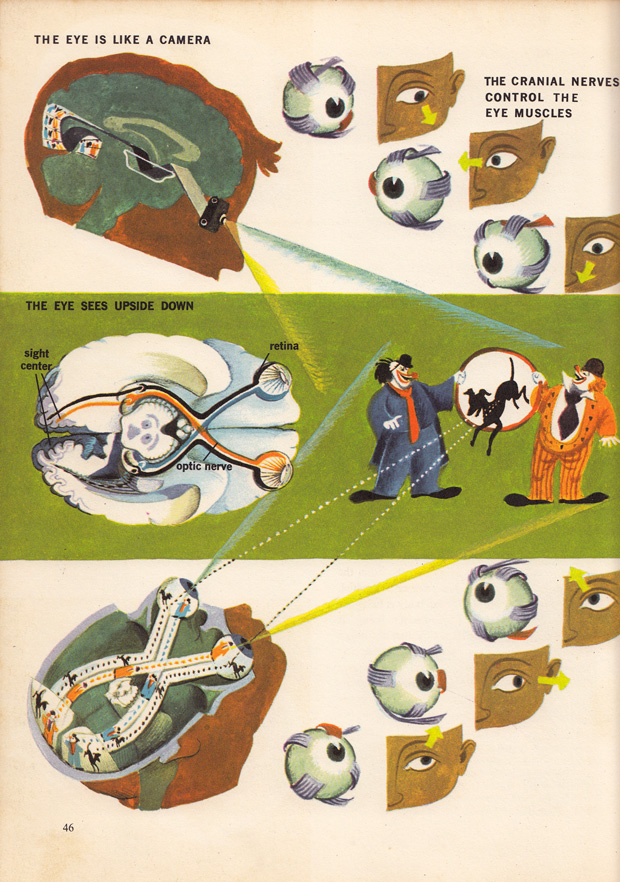
A gorgeous four-page centerfold illustrates full-body views of the various systems — muscles, blood vessels, nerves, digestive organs, and the gastrointestinal tract.

The introduction traces the history of our modern understanding of the body:
Almost nothing, it seems, could be more important to man than the human body. It is the solid part of “I”; it is with us as long as we live. Yet thousands and thousands of years passed before man really learned about this physical part of himself.
Among the ancients, health was something given by the gods. If you had an accident or got sick, it was because you had displeased the gods, or a demon had entered your body. The demon had to be eliminated, the gods made happy, before you could get well. Breathing and digestion, the circulation of blood, the working of the brain — these functions that kept a human being alive and active were not understood. The few real facts that were known were badly mixed up with superstition.
